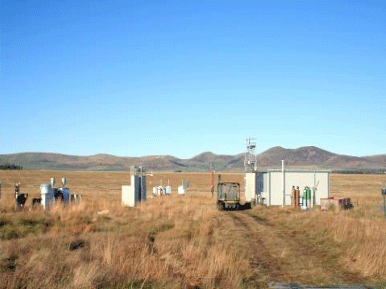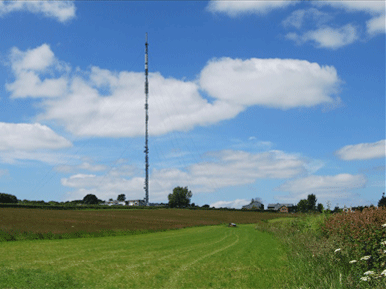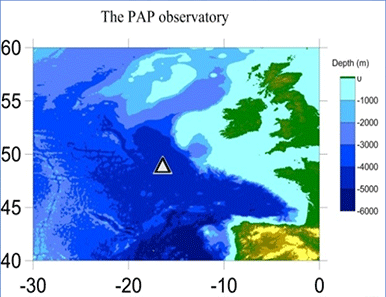The UK-ICOS community formally became members of the ICOS-RI in June 2016. In total, the network has five stations. Below is a summary of the stations and a short description for each of the observing systems, (ocean, atmosphere and ecosystem) that constitute the UK-ICOS research infrastructure.
| Station name | Station PI | Host Institution | Station sector and site description | Station Status | Image |
|---|---|---|---|---|---|
| Auchencorth Moss | Eiko Nemitz | Centre for Ecology and Hydrology | Terrestrial - Peatland | Class 1 |  |
| Ridge Hill | Kieran Stanley | Bristol University | Atmospheric - Tall tower | Class 2 |  |
| Weybourne Atmospheric Observatory | Grant Forster | National Centre for Atmospheric Science and the University of East Anglia | Atmospheric - Coastal | Class 2 |  |
| Porcupine Abyssal Plain - PAP | Sue Hartman | The National Oceanography Centre and the MET Office | Ocean – Mooring and surface buoy, NW Atlantic | Class 2 |  |
The Ocean StationsThe marine element of the UK observational component of ICOS is designed to capture both the air-sea exchanges and the oceanic sinks of GHGs. The coastal shelf seas around the UK are an important element of the NW European shelf (the latter being the most extensive coastal shelf sea globally). Furthermore, the North Atlantic, across which approximately half of the marine UK-ICOS stations are located is a major sink for anthropogenic CO2. The marine observational strategy is built on a combination of Eulerian (fixed point) and Lagrangian (moving) stations to capture both the temporal and spatial variability in uptake. In the coastal zone, a long term station in the English Channel operated by PML (Western Channel Observatory) with over 25 years of data allows the ongoing uptake of GHGs by the shelf seas (and the associated impacts such as ocean acidification) to be monitored. In the open ocean the principal observing systems are a combination of fixed-point open ocean observatories such as the Porcupine Abyssal Plain Sustained Observatory, and underway measurement systems collecting data on sea surface pCO2 and air-sea CO2 fluxes. These underway systems are fitted to merchant vessels, and research vessels. Together these open ocean observational strategies allows the role of the North Atlantic in the global carbon cycle to be established. |
The Atmospheric StationsThe atmospheric observing system of the UK component of ICOS is substantially built on the DECC tall tower network. This network is designed to allow the whole GHG budget of the UK to be established along with quantifying the impact of urban landscapes on this budget. The system operates in strong collaboration with important UK atmospheric stations including Weybourne on the North Norfolk coast and Ridge Hill. |
The Terrestrial StationsThe ecosystem observing system of the UK component of ICOS is designed to account for the heterogeneity present in UK landscape types and climate, reflecting the key ecosystems within the logistical constraints of having access to mains power. It aims to sample the uptake of carbon by forests, peatlands and grasslands, the major ecotypes with significant impacts on natural and anthropogenic GHG cycling. Auchencorth Moss is a low-lying caombrotrophic peatland in SE Scotland, which boasts one of the longest CO2 flux time series globally and is unique in quantifying also GHG losses from stream water export. The response of the year-to-year variation in net ecosystem exchange to climate drivers provides important information on the likely impacts of climate change on carbon accumulation in UK peatlands. Through Auchencorth Moss, a couple of small UK networks (the CEH Carbon Catchment Peatlands and the Defra Lowland Peatlands) will be referenced to ICOS. |